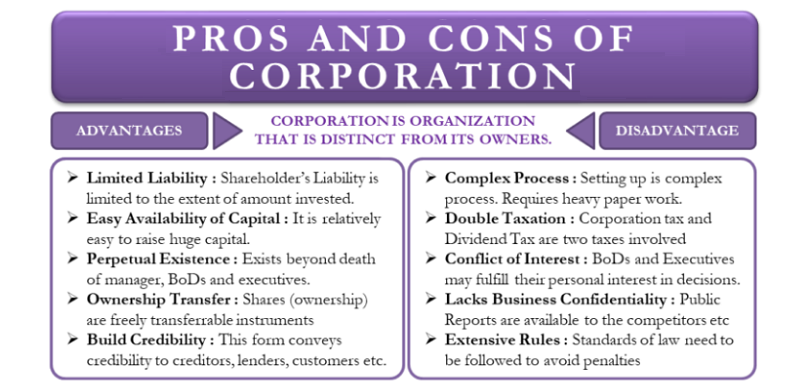
As a small business owner or entrepreneur, choosing the appropriate business structure is a critical decision. This decision significantly influences your company’s tax obligations, the paperwork you need to file, the personal liability you face, and, importantly, the limitations on shareholders that come into play. Here we examine the world of S-Corporations and C-Corporations, focusing particularly on the often-overlooked yet crucial aspect of shareholder limitations. Shareholder limitations not only dictate the maximum number of shareholders your company can have but also determine the type of shareholders and classes of stock that your company can offer.
Contents
- Introduction to Shareholder Limitations
- Understanding S-Corporations
- Understanding C-Corporations
- Comparing Shareholder Limitations: S-Corporations vs C-Corporations
- Impacts of Shareholder Limitations on Corporation Operations
- References
As a small business owner or entrepreneur, the choice of an appropriate business structure is a vital decision that significantly influences various aspects of your venture. One such aspect that we will be focusing on in this blog post is shareholder limitations.
Before we look into the specific structures of S-Corporations and C-Corporations, let’s first understand the concept of shareholder limitations. In essence, shareholder limitations refer to restrictions placed on a corporation regarding the total number of shareholders it can have, the types of individuals or entities that can be shareholders, and the classes of stock that can be issued. These limitations can significantly impact the company’s ability to raise capital, its tax obligations, and its overall operations.
Overview of S-Corporations and C-Corporations
The business landscape offers various forms of business structures, but among the most popular are the S-Corporation and C-Corporation. They offer benefits such as protecting owners from personal liability and offering an organized structure for management and profit distribution. However, they differ in several aspects, especially when it comes to shareholder limitations.

Understanding S-Corporations
As we prepare to go into depth regarding shareholder limitations, it’s essential to start with a deep dive into the nature and nuances of S-Corporations.
Definition and Overview of S-Corporations
An S-Corporation, or Subchapter S Corporation, is a type of corporation that meets specific Internal Revenue Service (IRS) requirements. The name “S-Corporation” comes from its creation under Subchapter S of the Internal Revenue Code. One of the most attractive features of an S-Corporation is that it combines the limited liability of a corporation with the tax benefits of a sole proprietorship or partnership. This means that S-Corporations avoid double taxation: they pass their income, deductions, and credits through to their shareholders for federal tax purposes [1].
In an S-Corporation, shareholders play a crucial role. They are the owners of the company and have the right to vote on major corporate decisions, such as electing the board of directors or approving a potential merger. Depending on the number of shares they own, their voting power may vary. Additionally, shareholders in an S-Corporation receive a portion of the company’s profits based on their percentage of ownership.
S-Corporations come with certain restrictions related to shareholders. First, an S-Corporation is limited to 100 shareholders. This means it cannot expand ownership beyond this number, limiting its ability to raise capital compared to a C-Corporation.
Second, the types of shareholders are restricted. Shareholders can only be individuals, certain trusts, and estates. They cannot be partnerships, corporations, or non-resident aliens. This limitation narrows down the potential pool of investors for an S-Corporation.
Finally, S-Corporations can issue only one class of stock. This means all shareholders have the same rights to the corporation’s profits and assets. This lack of flexibility can deter potential investors looking for preferential rights in terms of dividends or liquidation proceeds.
Understanding C-Corporations
After understanding S-Corporations, it’s now time to move into the world of C-Corporations. Similar to the previous section, we’ll uncover the specifics of what a C-Corporation is, the role of shareholders within this business structure, and the shareholder limitations that accompany it.
Definition and Overview of C-Corporations
A C-Corporation, often simply called a corporation, is the most common type of corporate structure. Unlike S-Corporations, C-Corporations are taxed as separate entities under Subchapter C of the Internal Revenue Code. They are subject to what is often referred to as “double taxation.” This means the corporation pays corporate income tax on its earnings, and then shareholders pay personal income tax on the dividends they receive [2].
Despite this, C-Corporations have several advantages, such as increased potential for raising capital and no restrictions on the type and number of shareholders. They are often chosen by businesses planning to go public or seeking venture capital funding.
Just as in S-Corporations, shareholders in a C-Corporation are the owners of the company. They have the right to vote on significant corporate issues and elect the board of directors. Shareholders receive a portion of the corporation’s profits through dividends, and their influence within the corporation is usually proportional to the amount of stock they own.
In stark contrast to S-Corporations, C-Corporations have no limits on the number of shareholders. This means a C-Corporation can raise substantial capital by selling shares to an unlimited number of investors, making it an appealing choice for larger businesses or those with aggressive growth plans.
Additionally, C-Corporations do not restrict the types of entities that can be shareholders. They can issue stock to individuals, other corporations, partnerships, trusts, and even foreign investors. This wide range of potential investors further enhances a C-Corporation’s ability to raise capital.
In terms of stock classes, C-Corporations can issue multiple classes of stock. For instance, they can have both common and preferred stock, each with different voting rights and dividend rules. This flexibility allows a C-Corporation to tailor the rights of its shareholders to attract a diverse range of investors.

Now that we have examined the characteristics and shareholder limitations of both S-Corporations and C-Corporations, it’s time to contrast these two structures side by side. This comparison will help clarify the distinctions in the number of shareholders, types of shareholders, and classes of stock, making it easier for you to identify which structure may be the best fit for your business.
The total number of shareholders a corporation can have varies widely between S-Corporations and C-Corporations, and it’s a crucial factor to consider when deciding on your business structure [3].
An S-Corporation is limited to a maximum of 100 shareholders. This limit can restrict the corporation’s ability to raise capital as it grows and expands. If a business plans to stay relatively small or maintain a tight group of investors, this may not be an issue. However, for businesses with larger ambitions or those looking to attract numerous investors, this limitation could be a significant hurdle.
In contrast, C-Corporations have no restrictions on the number of shareholders. This lack of limitation means that a C-Corporation can potentially raise substantial capital by issuing shares to a broad range of investors. It opens up opportunities for larger scale operations and public offerings, making C-Corporations an attractive choice for businesses with ambitious growth plans.
The types of shareholders a corporation can have also vary between S-Corporations and C-Corporations. This difference can impact a business’s potential investor pool and its capacity to raise funds.
S-Corporations have strict regulations regarding who can be a shareholder. Only individuals, certain trusts, and estates can be shareholders. Partnerships, corporations, and non-resident aliens are ineligible. This limitation significantly narrows the potential investor pool for an S-Corporation.
On the other hand, C-Corporations face no such restrictions. They can issue shares to individuals, other corporations, partnerships, trusts, and foreign investors. This flexibility allows a C-Corporation to attract a wide variety of investors, enhancing its ability to raise capital.
Differences in Stock Classes
The ability to issue different classes of stock is another distinguishing factor between S-Corporations and C-Corporations. This capability can influence investors’ interest and control over the corporation [4].
Stock Classes in S-Corporations
S-Corporations can only issue one class of stock. This means that all shareholders have identical rights to the corporation’s profits and assets. While this simplicity can be appealing, it lacks flexibility and may deter investors seeking preferred stock with priority dividends or liquidation rights.
Stock Classes in C-Corporations
C-Corporations can issue multiple classes of stock, such as common and preferred stock. This allows them to offer different rights to different groups of shareholders, making it possible to attract a diverse range of investors. The ability to issue preferred stock can be particularly appealing to venture capitalists or other investors who prefer to have priority claims on dividends and assets in the event of liquidation.

Shareholder limitations can significantly influence the operational dynamics of a business. It affects how you raise capital, how you make strategic decisions, and even your long-term growth potential. By understanding these impacts, you can make a more informed choice about which corporate structure best aligns with your business goals.
Raising Capital
The number and type of shareholders a corporation can have directly impact its ability to raise capital.
S-Corporations
With a maximum of 100 shareholders and restrictions on shareholder types, S-Corporations may find their ability to raise capital somewhat constrained. These limits can inhibit expansion plans or make it more challenging to secure investment in competitive business environments.
C-Corporations
Conversely, C-Corporations, with no caps on shareholder numbers and types, can attract a broad range of domestic and international investors. This allows them to raise significant capital, offering more flexibility to fuel growth and expansion plans [5].
Decision-Making Process
The number and variety of shareholders can also influence a corporation’s decision-making process.
S-Corporations
In an S-Corporation, with fewer shareholders and one class of stock, decision-making is often simpler and more streamlined. Each shareholder usually has a more significant stake and voice in corporate decisions.
C-Corporations
In a C-Corporation, with potentially hundreds or thousands of shareholders and multiple stock classes, decision-making can become more complex. There may be a diversity of opinions, and managing shareholder expectations can become a delicate balancing act.
Potential for Growth and Expansion
Shareholder limitations can also impact a corporation’s growth potential.
S-Corporations
The shareholder limitations of an S-Corporation might restrict its growth potential. With fewer shareholders, it may be challenging to accumulate enough capital for large-scale growth or expansion initiatives.
C-Corporations
In contrast, a C-Corporation’s unlimited shareholders can provide substantial capital, potentially fueling significant growth. This makes C-Corporations a popular choice for businesses with ambitious expansion plans or those intending to go public.
References
[1] S Corporation Stock and Debt Basis
[2] S Corp Shareholder Limit: Everything You Need to Know
[3] Compare S corporation vs C corporation
[4] All in the Family as a Single Shareholder of an S-Corporation
[5]
